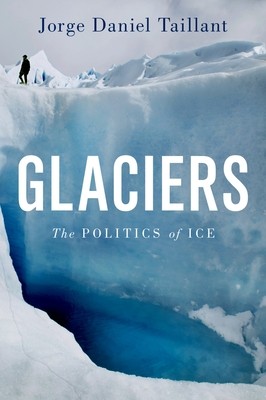
- We will send in 10–14 business days.
- Author: Jorge Daniel Taillant
- Publisher: Oxford University Press, USA
- ISBN-10: 0199367256
- ISBN-13: 9780199367252
- Format: 16 x 24.1 x 2.5 cm, hardcover
- Language: English
- SAVE -10% with code: EXTRA
Reviews
Description
Though not traditionally thought of as strategic natural resources, glaciers are a crucial part of our global ecosystem playing a fundamental role in the sustaining of life around the world. Comprising three quarters of the world's freshwater, they freeze in the winter and melt in the summer, supplying a steady flow of water for agriculture, livestock, industry and human consumption. The white of glacier surfaces reflect sunrays which otherwise warm our planet. Without them, many of the planet's rivers would run dry shortly after the winter snow-melt. A single mid-sized glacier in high mountain environments of places like California, Argentina, India, Kyrgyzstan, or Chile can provide an entire community with a sustained flow of drinking water for generations. On the other hand, when global temperatures rise, not only does glacier ice wither away into the oceans and cease to act as water reservoirs, but these massive ice bodies can become highly unstable and collapse into
downstream environments, resulting in severe natural events like glacier tsunamis and other deadly environmental catastrophes. But despite their critical role in environmental sustainability, glaciers often exist well outside our environmental consciousness, and they are mostly unprotected from atmospheric impacts of global warming or from soot deriving from transportation emissions, or from certain types of industrial activity such as mining, which has been shown to have devastating consequences for glacier survival.
EXTRA 10 % discount with code: EXTRA
The promotion ends in 18d.07:43:10
The discount code is valid when purchasing from 10 €. Discounts do not stack.
- Author: Jorge Daniel Taillant
- Publisher: Oxford University Press, USA
- ISBN-10: 0199367256
- ISBN-13: 9780199367252
- Format: 16 x 24.1 x 2.5 cm, hardcover
- Language: English English
Though not traditionally thought of as strategic natural resources, glaciers are a crucial part of our global ecosystem playing a fundamental role in the sustaining of life around the world. Comprising three quarters of the world's freshwater, they freeze in the winter and melt in the summer, supplying a steady flow of water for agriculture, livestock, industry and human consumption. The white of glacier surfaces reflect sunrays which otherwise warm our planet. Without them, many of the planet's rivers would run dry shortly after the winter snow-melt. A single mid-sized glacier in high mountain environments of places like California, Argentina, India, Kyrgyzstan, or Chile can provide an entire community with a sustained flow of drinking water for generations. On the other hand, when global temperatures rise, not only does glacier ice wither away into the oceans and cease to act as water reservoirs, but these massive ice bodies can become highly unstable and collapse into
downstream environments, resulting in severe natural events like glacier tsunamis and other deadly environmental catastrophes. But despite their critical role in environmental sustainability, glaciers often exist well outside our environmental consciousness, and they are mostly unprotected from atmospheric impacts of global warming or from soot deriving from transportation emissions, or from certain types of industrial activity such as mining, which has been shown to have devastating consequences for glacier survival.


Reviews